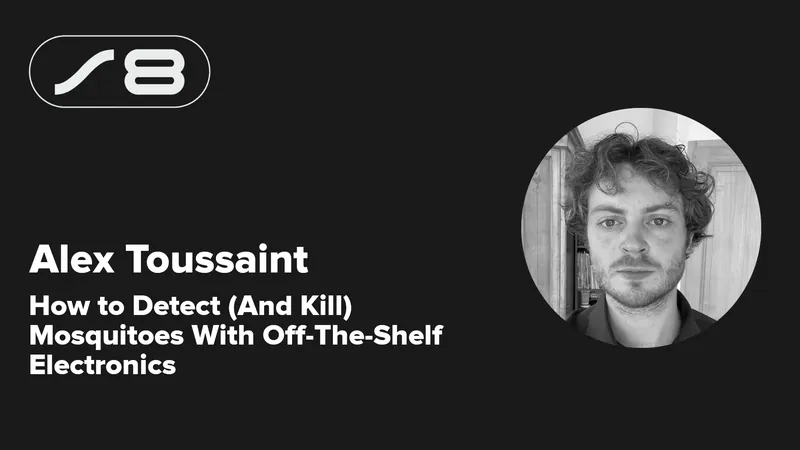
2024 Hackaday Supercon Talk: The Future of Mosquito Control—Drones and Sonar Technology
2025-03-25
Author: Arjun
Introduction
Are you tired of being bitten by mosquitoes? What if I told you that drones could be your new best friend in the fight against these pesky insects? In an exhilarating talk at the 2024 Hackaday Superconference, inventor Alex Toussaint unveiled an innovative approach to mosquito control that involves advanced drone technology and sophisticated sonar systems.
Drone Technology and Automation
Imagine taking to the skies with a quadcopter, engineered to efficiently target and eliminate mosquitoes without compromising other beneficial insects. While piloting a drone manually might seem like a challenging feat, Toussaint's development of an automated system makes it much more feasible.
LeSonar2 Technology
At the heart of this groundbreaking project is LeSonar2, an incredible 380-element phased sonar array that can detect mosquitoes in flight by analyzing their distinct micro-doppler return signatures. This technology not only aims for simplicity in usage—allowing for precise targeting and eradication of mosquitoes—but also opens the door to various other applications thanks to its open-source nature.
Ultrasonic Range Finding
The presentation dives deeper into Toussaint's vision for self-navigating drones and their potential in obstacle avoidance. While traditional camera systems are effective, they can be cumbersome and resource-intensive. In contrast, Toussaint advocates for using ultrasonic range finding, which allows for more precise detection of smaller objects. This idea led to the creation of a beamforming array, which brings impressive capabilities in detecting otherwise elusive insects.
Miniaturization of Technology
One of Toussaint's significant breakthroughs came from miniaturizing ultrasonic receivers. Conventional devices, often used in vehicles, are typically bulky and limit detection capabilities due to the distance between microphone elements. By repurposing TDK T3902 MEMS microphones—originally built for human hearing—he successfully created a compact array. Coupled with an FPGA for real-time processing, the result is an efficient system that emits ultrasound waves and collects precise 3D range data to target mosquitoes.
Sophisticated Identification Process
What's even more compelling is the sophisticated identification process. Distinguishing mosquitoes from flies, bees, and other pollinators is crucial to avoid harming beneficial insects during mosquito eradication. The micro-doppler signatures of insect wing beats provide the key to this distinction. Different insects produce unique echo patterns—wasps, for instance, create a broader bandwidth echo due to their wing structure, while mosquitoes showcase a much tighter signal.
Conclusion
This cutting-edge technology presents a revolutionary step in pest control, combining automation and sonar to tackle an age-old problem in innovative ways. As the project continues to evolve, it raises questions about the future implications of drone usage in agriculture and public health. Can this technology lead to a world free of mosquito-borne diseases? The potential is there, and as this project develops, it may change the way we think about pest control forever. Stay tuned for more updates on this exciting journey!



 Brasil (PT)
Brasil (PT)
 Canada (EN)
Canada (EN)
 Chile (ES)
Chile (ES)
 Česko (CS)
Česko (CS)
 대한민국 (KO)
대한민국 (KO)
 España (ES)
España (ES)
 France (FR)
France (FR)
 Hong Kong (EN)
Hong Kong (EN)
 Italia (IT)
Italia (IT)
 日本 (JA)
日本 (JA)
 Magyarország (HU)
Magyarország (HU)
 Norge (NO)
Norge (NO)
 Polska (PL)
Polska (PL)
 Schweiz (DE)
Schweiz (DE)
 Singapore (EN)
Singapore (EN)
 Sverige (SV)
Sverige (SV)
 Suomi (FI)
Suomi (FI)
 Türkiye (TR)
Türkiye (TR)
 الإمارات العربية المتحدة (AR)
الإمارات العربية المتحدة (AR)